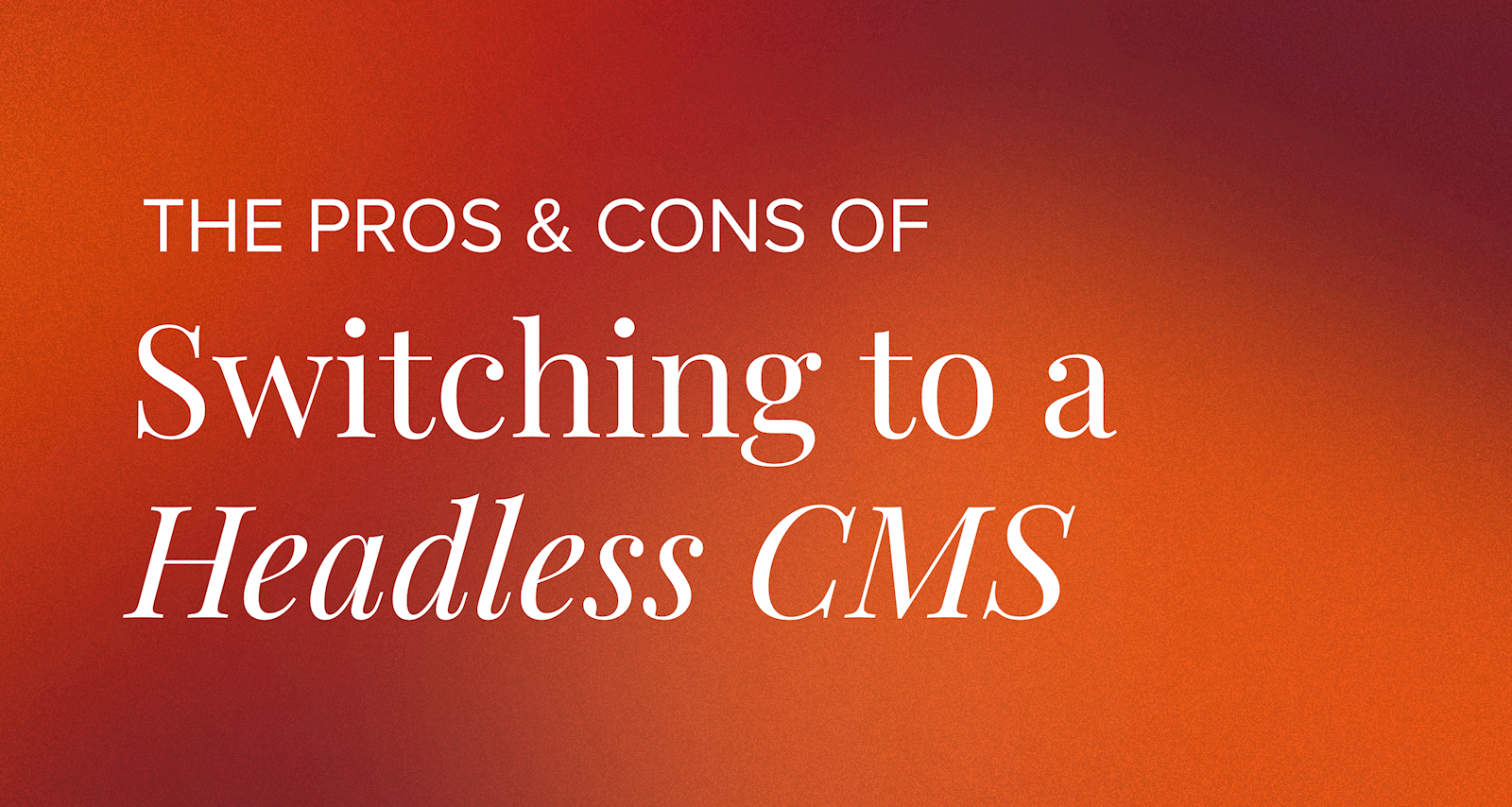Why Use a Headless CMS?
Published by Spinutech on July 3, 2024

Whether or not you know what a Headless CMS is, you’ve probably at least heard the term.
The Headless Content Management System (CMS) market has been growing rapidly over the past several years and is only expected to grow as interest in and adoption of the technology increases. Businesses are reporting increases in ROI, improvements in user experience, and better site performance since switching their website to a Headless CMS.
Should you make the switch? It’s not a simple “Yes” or “No” question.
Before we can answer, we’ll need to dive deeper into what a Headless CMS is, explore the benefits and drawbacks, and outline the key considerations you’ll need to make.
What is a Headless CMS?
A Headless CMS is essentially a system that manages your content but does not dictate how that content looks or where it goes. Unlike a traditional CMS that controls both the content and its presentation on your website, a Headless CMS only handles the content aspect. It stores your content in one place and then sends it to various platforms — like your website or mobile app — through APIs. This separation gives you more flexibility to create unique and engaging user experiences across different devices.
What are the Benefits of a Headless CMS?
- Flexibility and Customization: Developers have the freedom to use any frontend framework or technology, allowing for highly customized and unique user experiences.
- Omnichannel Content Delivery: Content can be seamlessly delivered across multiple platforms and devices, ensuring consistency in your messaging.
- Scalability: As your business grows, a Headless CMS can easily scale, handling large volumes of content and traffic without significant reconfigurations.
- Enhanced Security: With no direct access to the content management interface from the frontend, it reduces the risk of security breaches.
What are the Potential Drawbacks of a Headless CMS?
- Technical Complexity: Implementing and managing a Headless CMS can be complex, requiring more technical knowledge and expertise than a traditional CMS. For non-technical content creators, you may need dedicated development resources.
- Higher Cost: Initial setup and ongoing maintenance can be more expensive compared to traditional CMS solutions. You may also need to invest in a dedicated in-house team or partner with a digital agency to effectively maintain a headless system.
- Lack of Built-In Designs and Features: Headless CMS solutions typically don’t come with built-in design templates, page builders, and other out-of-the-box features. This means more time and effort is required to design and develop the frontend.
- Integration Challenges: Ensuring smooth integration between the backend and various frontend applications can be challenging and may require custom development.
Is a Headless CMS Right for Your Website?
Obviously there are a number of benefits to using a Headless CMS, but the potential drawbacks also highlight the importance of carefully evaluating your business’s needs, resources, and technical capabilities before committing to a Headless CMS.
Some of the questions you should be asking yourself are:
- Does my content strategy require the flexibility and scalability of a Headless CMS?
- Do I have access to skilled developers who are familiar with API-driven architectures?
- Do I have a budget that can cover the total costs of a Headless CMS?
If you’ve got questions of your own about whether a Headless CMS is the right for your business and website, let’s chat.